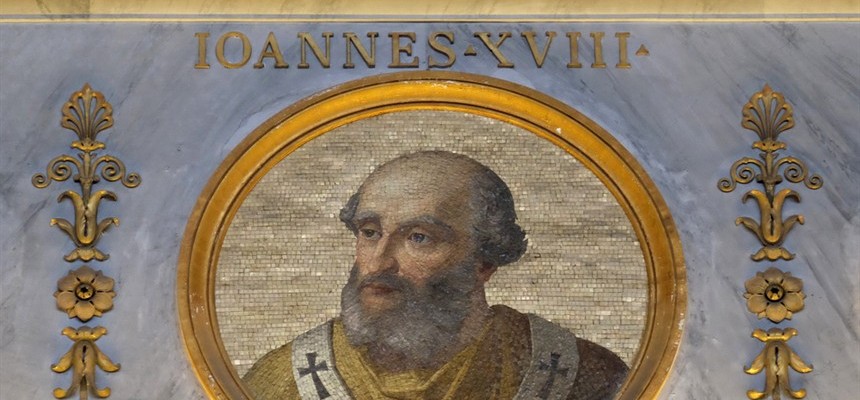
Giovanni Fasano was born into a priest’s family in Rome in the mid-900s. It was a time of extreme control of the Catholic Church by politicians, especially the emperors of the Holy Roman Empire and the Kingdom of Italy. John XVII died and Fasano, the pastor of St. Peter’s, was chosen and consecrated on December 25, 1003. Learned and pious, of an amiable and conciliatory disposition, Cardinal Fasano was probably considered malleable by the dictator of Rome.
Following a one-hundred-year family tradition, John Crescentius the Third, military leader and tight-fisted ruler of Rome, subordinated the new pope and permitted him very little temporal discretion. The election, as had several previous elections, was considered scandalous.
When Emperor Otto III died at 21 in 1002, his second cousin, Henry the Duke of Bavaria, became the king of Germany. He did not immediately receive the other accolades, those of king of Italy and Emperor of the Holy Roman Empire.
Meanwhile, Arduin, the Margrave of Ivrea, a tiny town in the Alps, had also been Count of the Sacred Palace of the Lateran. This gave him some clout. A few years after the death of Otto III, he was elected by the Roman nobles to be king of Italy in the safer city of Pavia. He was supported by the nobility but opposed by the episcopate. Pope John tended to support Henry, although he could do little. When Henry heard of the election, he invaded Italy and proceeded to defeat Arduin in battle. He, then, had himself crowned king of Italy, going home to Germany soon after. Arduin was left to have some authority in northeast Italy for a decade.
Pope John was permitted mostly ecclesiastical administration, not political. He authorized the establishment of the Diocese of Bamburg. King Henry of Germany and Italy was interested in using it as a base for missionary activity among the Slavs. John also revived the Diocese of Merseburg, which had been suppressed under Emperor Otto II. He was also successful in negotiating a temporary peace between the Eastern and Western Churches, the last one before the Great Schism fifty years later.
Sitting in Rome, unable to help his friends, Pope John had much on his hands, anyhow. In the five and a half years of his reign, he had to contend with famine and plague in the mid years of his reign. Also, the Saracens of the emirate of Sicily were constantly attacking the west coast of the peninsula as far north as Rome.
After five years, Pope John was an embittered man. He abdicated the throne and retired to a monastery attached to St. Paul’s Outside the Walls, where he lived less than a year, dying in July 1009. He was buried at Old St. Peter’s basilica.

Recent Comments